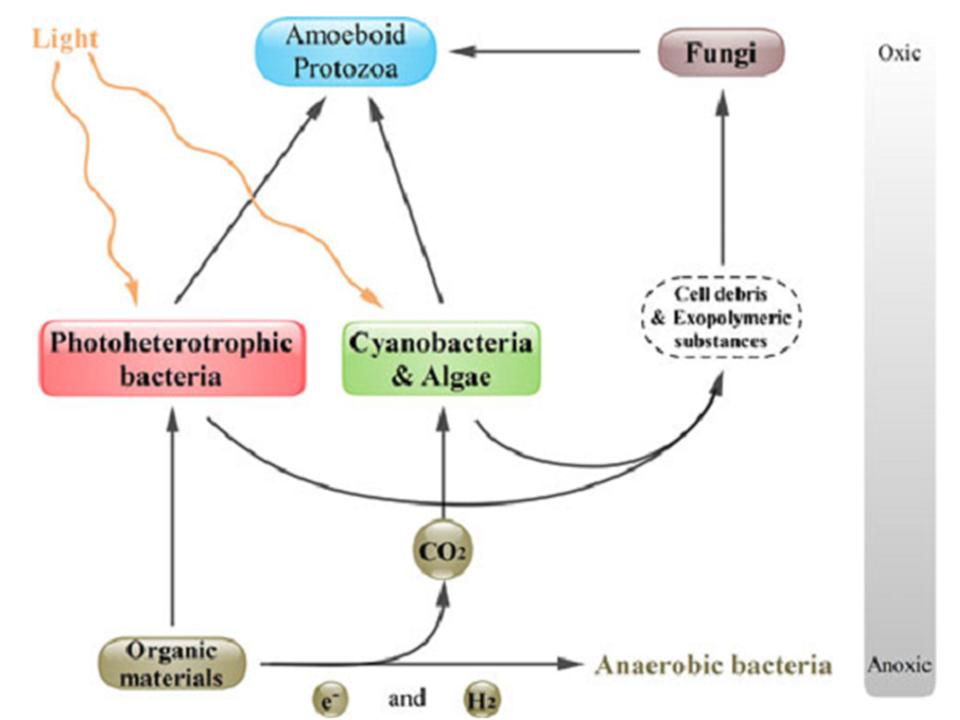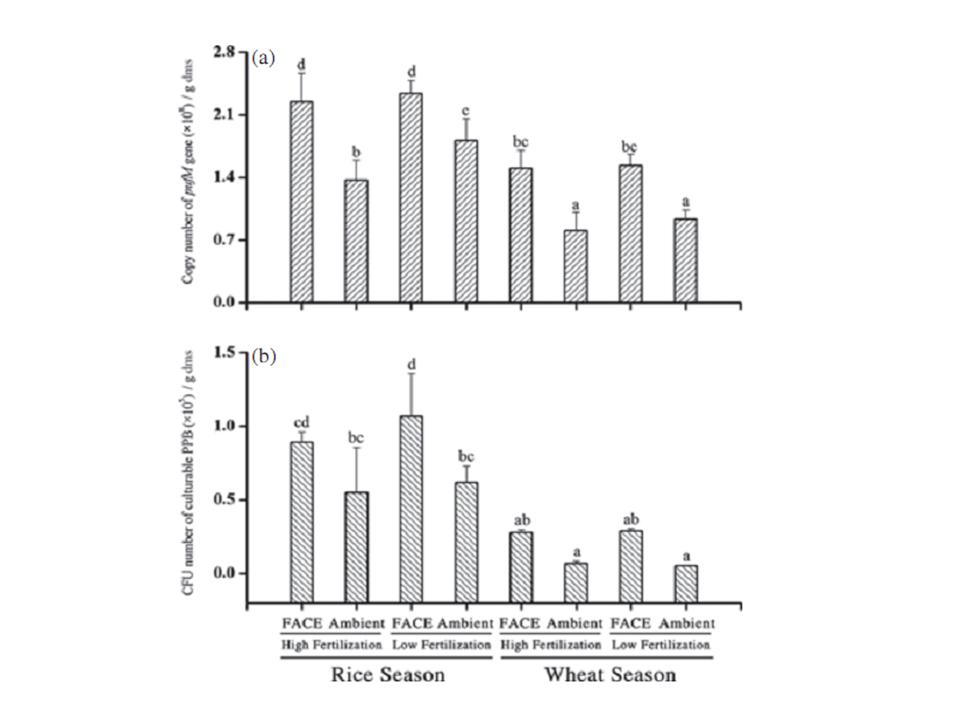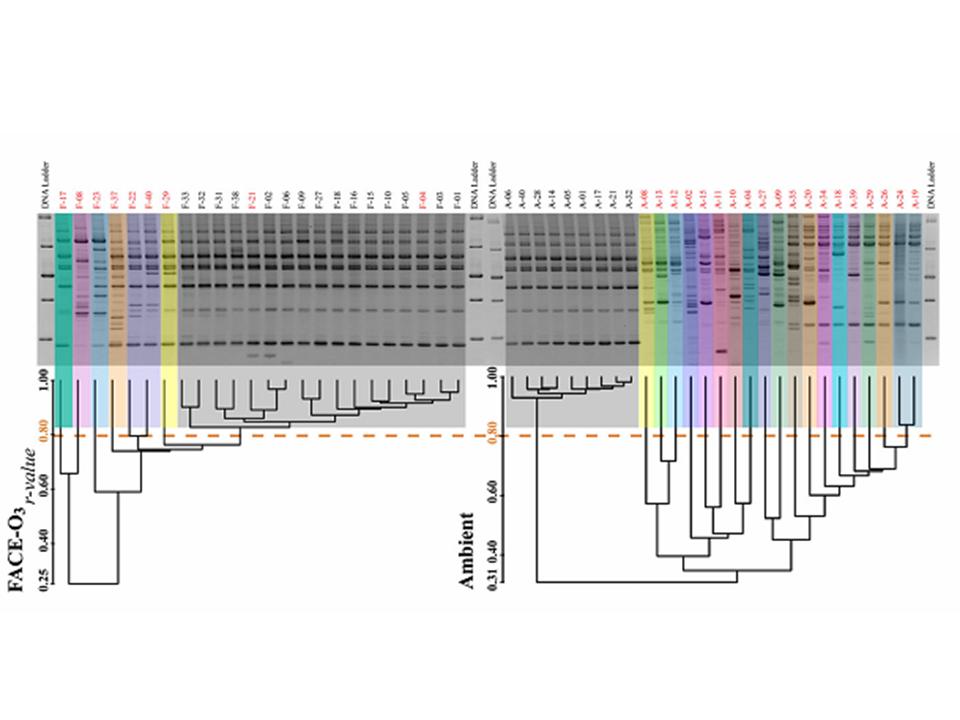Figure 1 A conceptual model for a phototrophy-driven microbial food web in a rice soil. Under anoxic conditions, organic materials are converted to CO2, which fuels the growth of primary producers of cyanobacteria and algae. The light energy is also harvested by photoheterotrophic bacteria to metabolize organic materials directly as secondary producers. Amoeboid protozoa prey on the biomass of fungi and phototrophic microorganisms. Fungi likely assimilate the nutrients from cell debris and extracellular substance for growth.
Anoxygenic purple phototrophic bacteria (AnPPB) are an extremely metabolically diverse group of proteobacteria that can use either sulfur, hydrogen, iron or organic compounds as electron donors during light harvesting reactions. Terrestrial ecosystems, such as paddy soils contain a numerically abundant and phylogenetically diverse AnPPB community. However, the related knowledge is still limited till now. Based on China FACE (Free Air Concentration Enrichment) platform, the team of Prof. Lin in Institute of Soil Science, Chinese Academy of Sciences investigated the diversity and ecological behaviors of AnPPB in paddy soil, as well as their responses to global climate changes of elevated atmospheric CO2 and O3 alone, using improved culture-reliant methods and a variety of molecular approaches. Combining paraffin wax overlay plate method and DNA fingerprinting and real-time quantitative PCR approaches, we revealed the paddy AnPPB diversity. By DNA-based stable isotope probing (SIP), observed for the first time, paddy AnPPB are found to assimilate organic matter for growth under in situ conditions without light and to be involved into a bottom-up microbial food web (Figure 1). In response to global climate changes, the richness and abundance of paddy AnPPB increased under elevated atmospheric CO2 (Figure 2), while they are decreased by elevated ground-level O3, as well as their percentages in total bacterial population (Figure 3) by reducing their metabolic capability (Figure 4). Through the AnPPB-involved microbial food web, global climate changes can affect several microbial trophic levels, and finally would influence paddy ecosystem. These investigations would be of great help toward a better understanding of not only nutrients cycling of paddy soil driven by soil microorganisms, but also effects of global climate changes on paddy ecosystem. The abovementioned results and conclusions have been published on Soil Science Society of America Journal, Microbial Ecology, Plant and Soil, Microbial Biotechnology, Journal of Soils and Sediments, European Journal of Soil Science and Microbiology China.
 |
|
Figure 1 A conceptual model for a phototrophy-driven microbial food web in a rice soil. Under anoxic conditions, organic materials are converted to CO2, which fuels the growth of primary producers of cyanobacteria and algae. The light energy is also harvested by photoheterotrophic bacteria to metabolize organic materials directly as secondary producers. Amoeboid protozoa prey on the biomass of fungi and phototrophic microorganisms. Fungi likely assimilate the nutrients from cell debris and extracellular substance for growth. |
|

|
|
Figure 2 (a) The copy numbers ofpufMgenes in soils under different crop cultivations. (b) Culture-reliant enumeration of purple phototrophic bacteria in soils under different crop cultivation by paraffin wax overlay of pour plates. |
|
|
 |
|
Figure 3 Dissolved organic C concentration, copy number ofpufMgenes, and CFU number of R. palustris in paddy soils under different atmospheric O3concentrations (a). The copy numbers of bacterial 16S rRNA gene and the ratios ofpufMgene to bacterial 16S rRNA gene (b). |

Figure 4 BOX-PCR fingerprints of a 24 isolates under elevated ground-level O3and 28 isolates under ambient. All dendrograms were produced by using Pearson’s product-moment coefficient and a UPGMA clustering algorithm.
|
|
|
